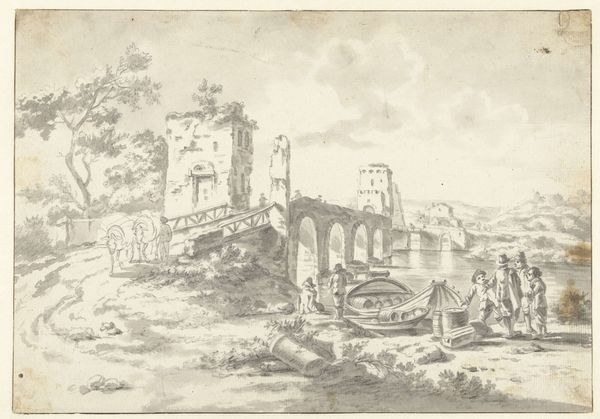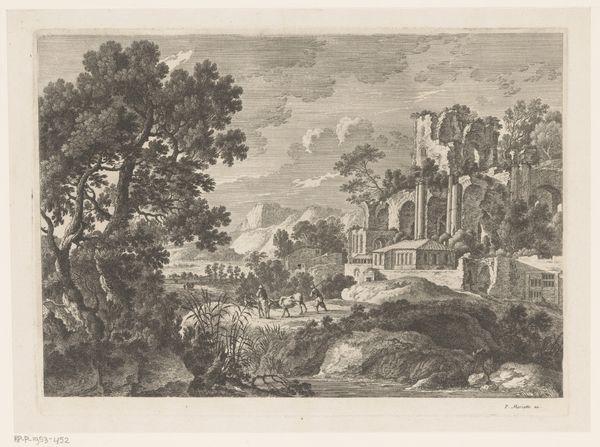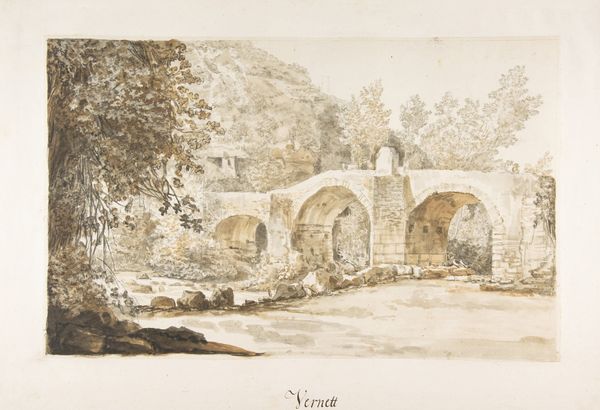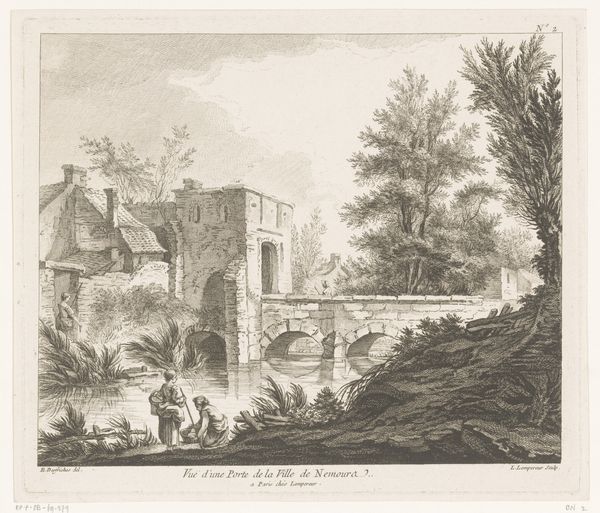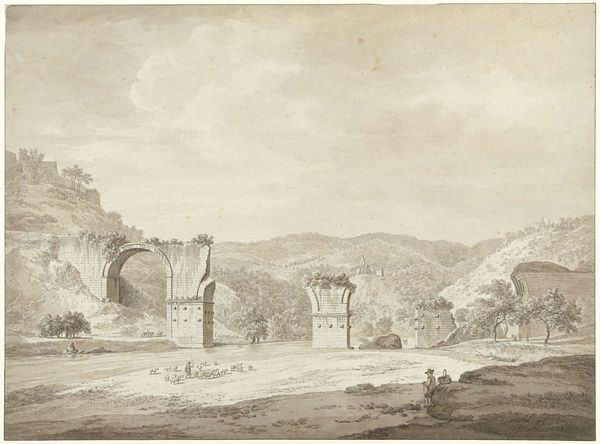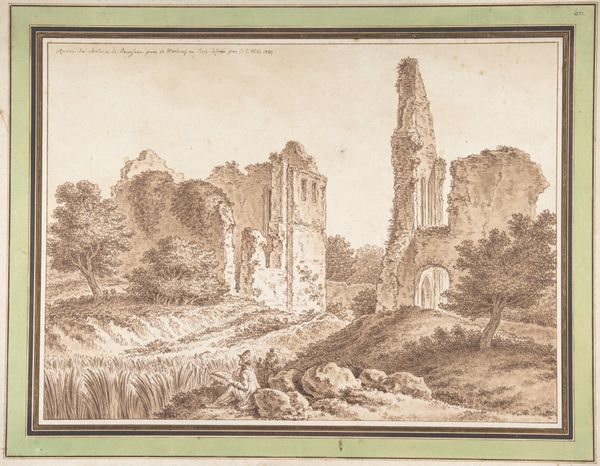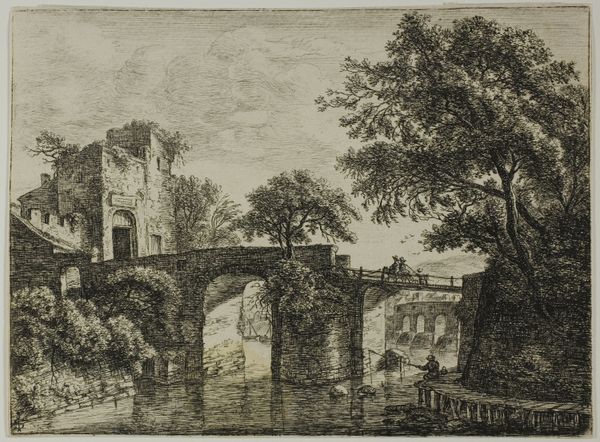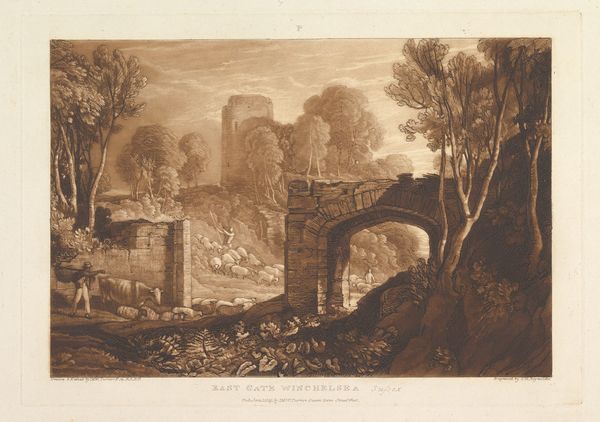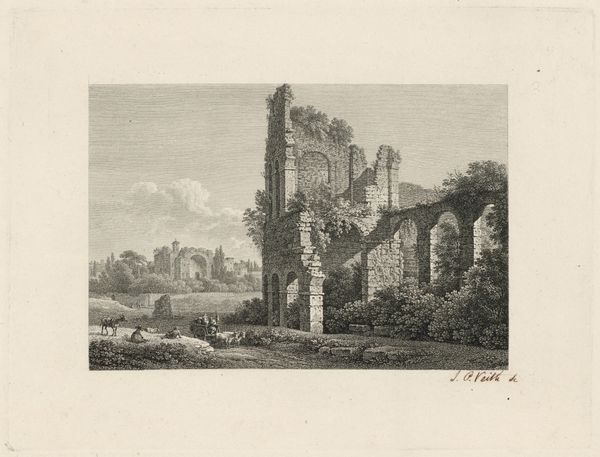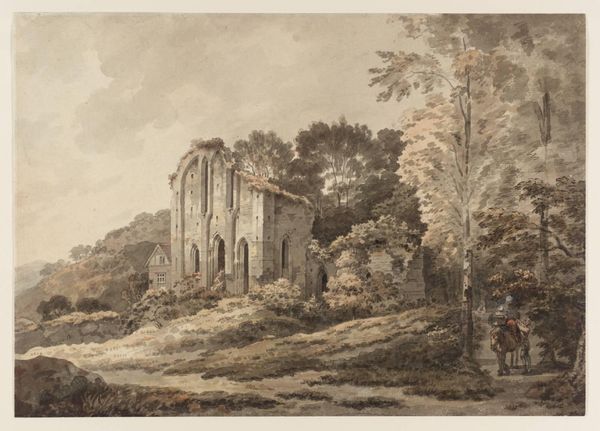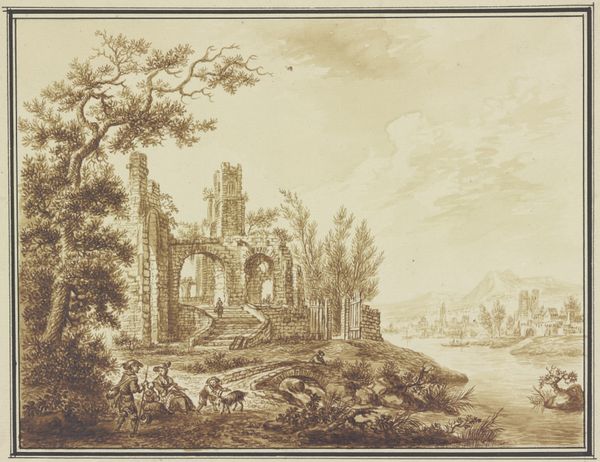
drawing, ink
#
drawing
#
landscape
#
charcoal drawing
#
romanesque
#
ink
#
cityscape
#
realism
Dimensions: 330 × 232 mm
Copyright: Public Domain
Curator: Here we have an ink and charcoal drawing titled "Landscape with Roman Ruins" housed here at The Art Institute of Chicago. Editor: Immediately, I'm struck by its melancholy. The sepia tones and the crumbling architecture evoke a profound sense of the past and the relentless march of time. Curator: Note how the artist employs a limited tonal range, maximizing contrast to define the architectural forms and surrounding foliage. The stark light delineates structure in a methodical study. Editor: But the ruins also signify cultural memory, wouldn’t you agree? The fallen Roman Empire… its values and power… represented by these crumbling arches. It's the age-old symbol of "vanitas" – the futility of earthly achievements. Curator: Interesting. However, the artist does not portray literal Roman ruins. I read the towers more as geometrical assertions within space, using negative volumes as the primary feature, which interacts directly with the flat picture plane. Editor: I disagree. Look at the human figures in the foreground: are they surveying the land or lamenting what once stood here? Surely their placement asks us to consider our own place in history. Perhaps the artist encourages contemplation on the transience of civilizations, no matter how mighty. Curator: Your point on temporality is duly noted. But regardless of potential allegorical meaning, the structural arrangement and visual effect of ink interacting with absorbent paper are critical to interpreting the image, perhaps even taking precedence. Editor: Well, it is hard to disregard the subtle power this cityscape radiates! This piece speaks volumes, prompting a meditation on memory, power, and decline, filtered through the remnants of a civilization and translated in earth tones. Curator: An elegy composed of light and dark. Nicely stated. It causes a complex response through what appears to be, simply, visual arrangement.
Comments
No comments
Be the first to comment and join the conversation on the ultimate creative platform.
